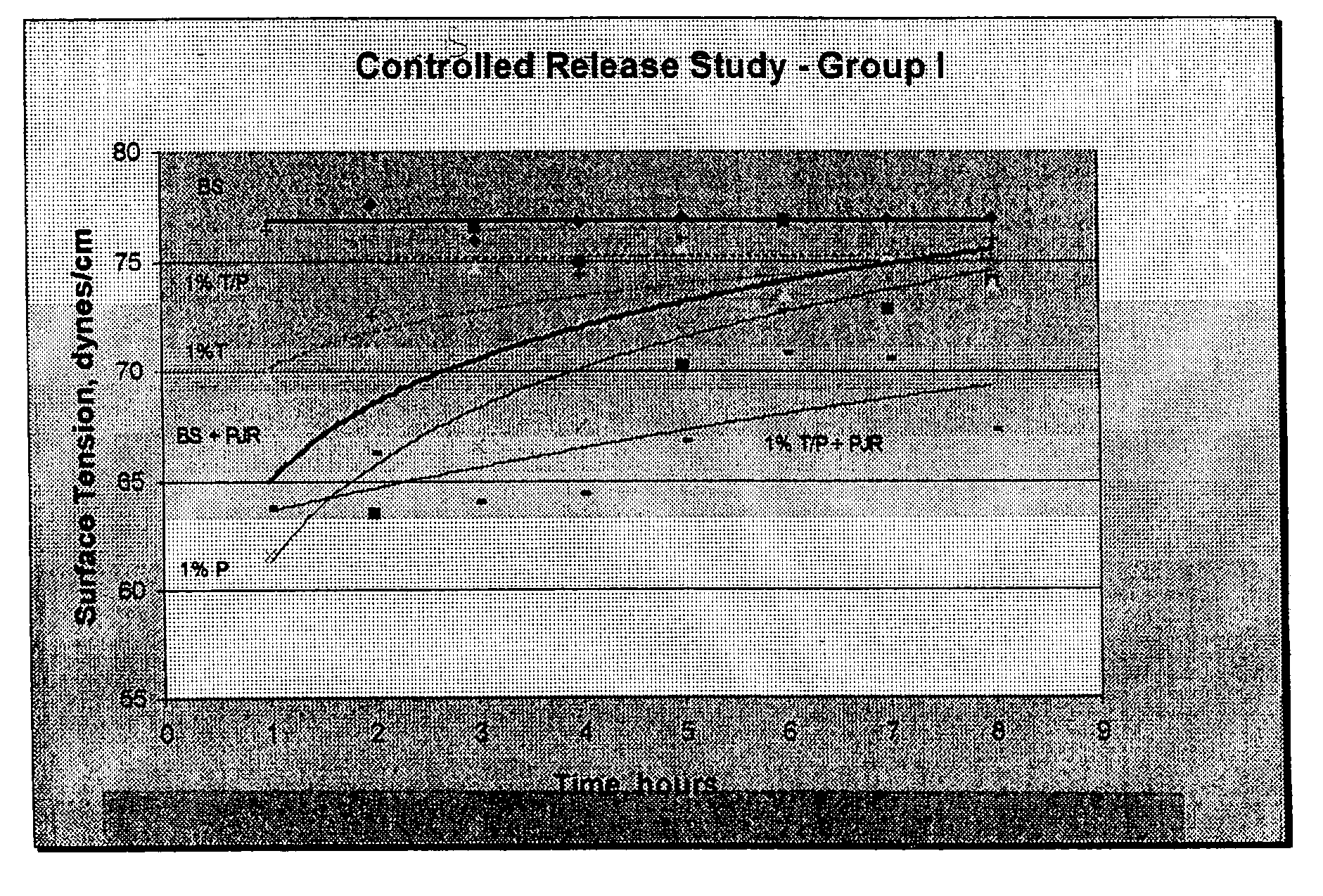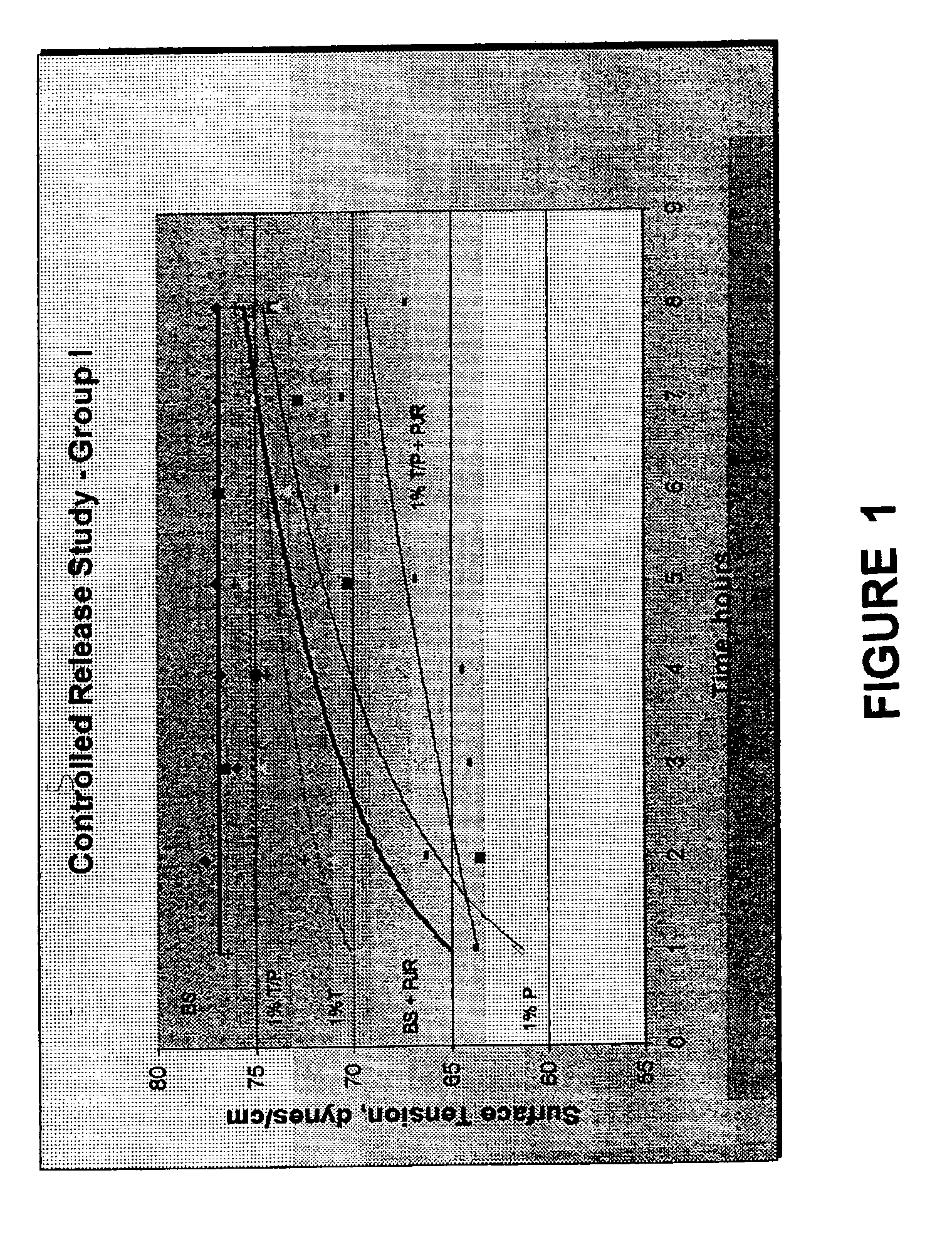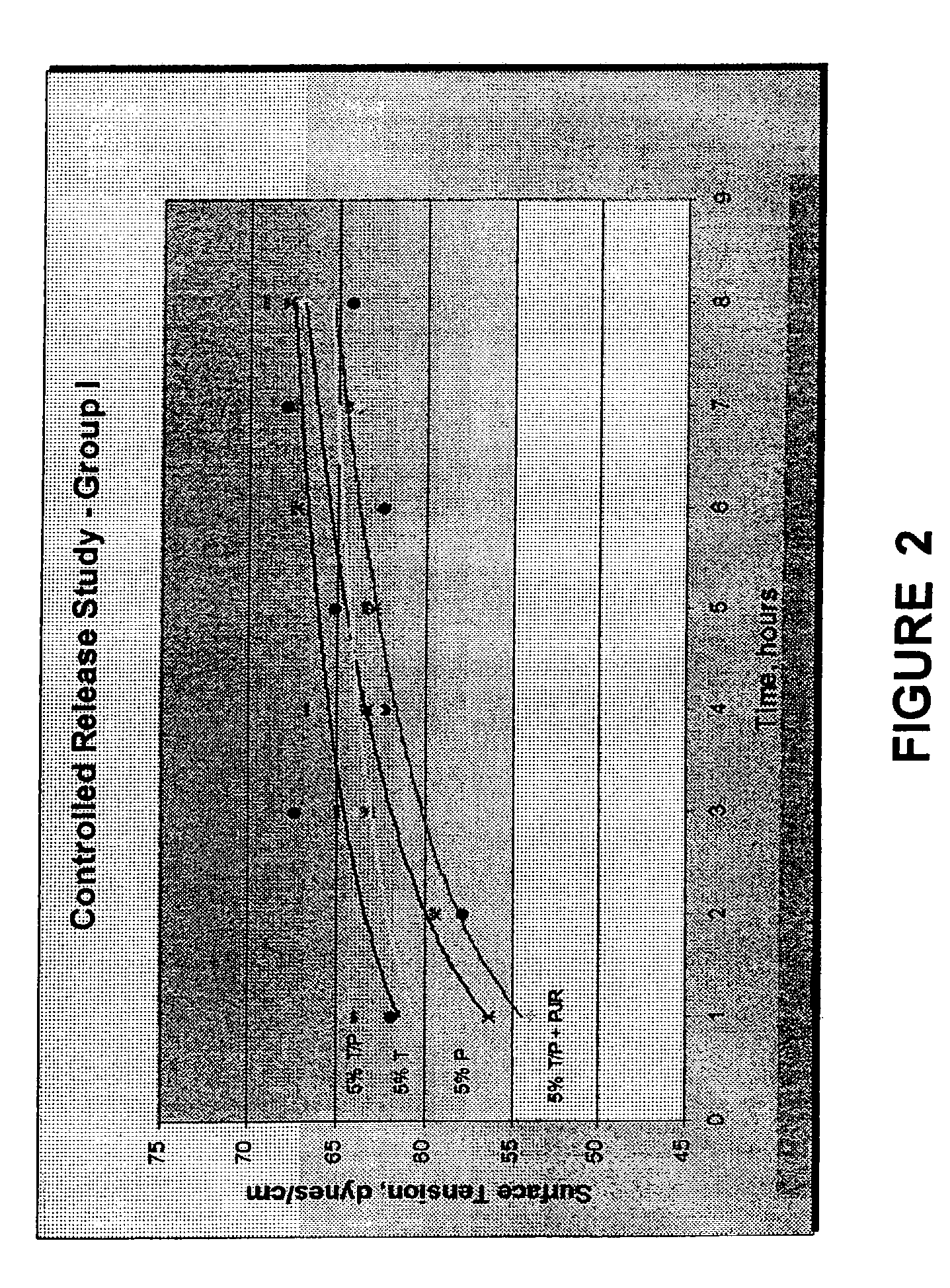Method and composition for reducing contact lens swelling
a contact lens and composition technology, applied in the field of solution, can solve the problems of reducing visual acuity, affecting the appearance of contact lenses, and not being able to alter the dimensions of contact lenses from the manufacturer's finished product specifications, so as to improve lubricity, prolong wetting performance, and preserve visual acuity
- Summary
- Abstract
- Description
- Claims
- Application Information
AI Technical Summary
Benefits of technology
Problems solved by technology
Method used
Image
Examples
example 1
Use of Polyquaternium 16 to Control Polyether Induced Lens Swelling
[0030]SureVue™ lenses (Johnson & Johnson) were soaked in the base test solutions identified below in Table 1 for four hours with a specified amount of polyethers added thereto as identified in Column 1 of Table 2 below. The lenses were then placed under a microscope. While under the microscope, the lenses were submerged in the same solution they were previously soaked in for four hours. Using imaging software connected to the microscope, the length of the diameter of the lenses were measured and recorded as set forth below in Table 2. Before measuring and recording, the microscope was first calibrated with a round disc of known 9.6 mm diameter. SureVue™ lenses are 14.0 mm in diameter in the original packaging solution. The Control 1 solutions containing various amount of polyethers were found to increase the lens diameter in a polyether concentration-dependent manner, which was effectively controlled when Luviquat FC...
example 2
Use of Polyquaternium 10 to Control Polyether Induced Lens Swelling
[0033]To further illustrate the effect of cationic polyelectrolytes in controlling polyether induced lens swelling, the base test solutions identified in Table 3 below were tested according to the test procedures described in Example 1 above. The test results are summarized below in Table 4. Polyquaternium-10 compounds, represented here by Polymer JR 400, Polymer LR 400 and Polymer LK, were found to be effective in controlling the lens swelling.
[0034]
TABLE 3Base Test Solutions - Polyquaternium 10Ingredients (w / w %)Solution CSolution DSolution EBoric Acid0.850.850.85Sodium Phosphate0.150.150.15MonobasicSodium Phosphate0.310.310.31DibasicHAP* (30%)0.10.10.1Sodium Chloride0.260.260.26PHMB**1.1 ppm1.1 ppm1.1 ppmPolymer JR 4000.02——Polymer LR 400—0.02—Polymer LK——0.02pH7.07.07.0Osmolality (mOsm / Kg)286286286*HAP = Hydroxyalkyl phosphonate**PHMB = Poly(hexamethylene biguanide)
[0035]
TABLE 4Test ResultsLens diameter after 4 h...
example 3
Preferred Formulation with a Borate-Phosphate Buffer
[0036]The multi-purpose lens care formulation identified as Solution F in Table 5 below, is illustrative of a preferred embodiment of the present invention using a borate-phosphate buffer.
[0037]
TABLE 5Preferred FormulationSolution FAmount (% w / w)Boric Acid0.85Sodium Phosphate Monobasic0.15Sodium Phosphate Dibasic0.31Sodium Chloride0.26Pluronic F1272.0Tetronic 11071.0HAP* (30%)0.1Polymer JR 30M0.02PHMB**1.1 ppmpH7.0Osmolality (mOsm / Kg)300*HAP = Hydroxyalkyl phosphonate**PHMB = Poly(hexamethylene biguanide)
PUM
 Login to View More
Login to View More Abstract
Description
Claims
Application Information
 Login to View More
Login to View More - R&D
- Intellectual Property
- Life Sciences
- Materials
- Tech Scout
- Unparalleled Data Quality
- Higher Quality Content
- 60% Fewer Hallucinations
Browse by: Latest US Patents, China's latest patents, Technical Efficacy Thesaurus, Application Domain, Technology Topic, Popular Technical Reports.
© 2025 PatSnap. All rights reserved.Legal|Privacy policy|Modern Slavery Act Transparency Statement|Sitemap|About US| Contact US: help@patsnap.com



